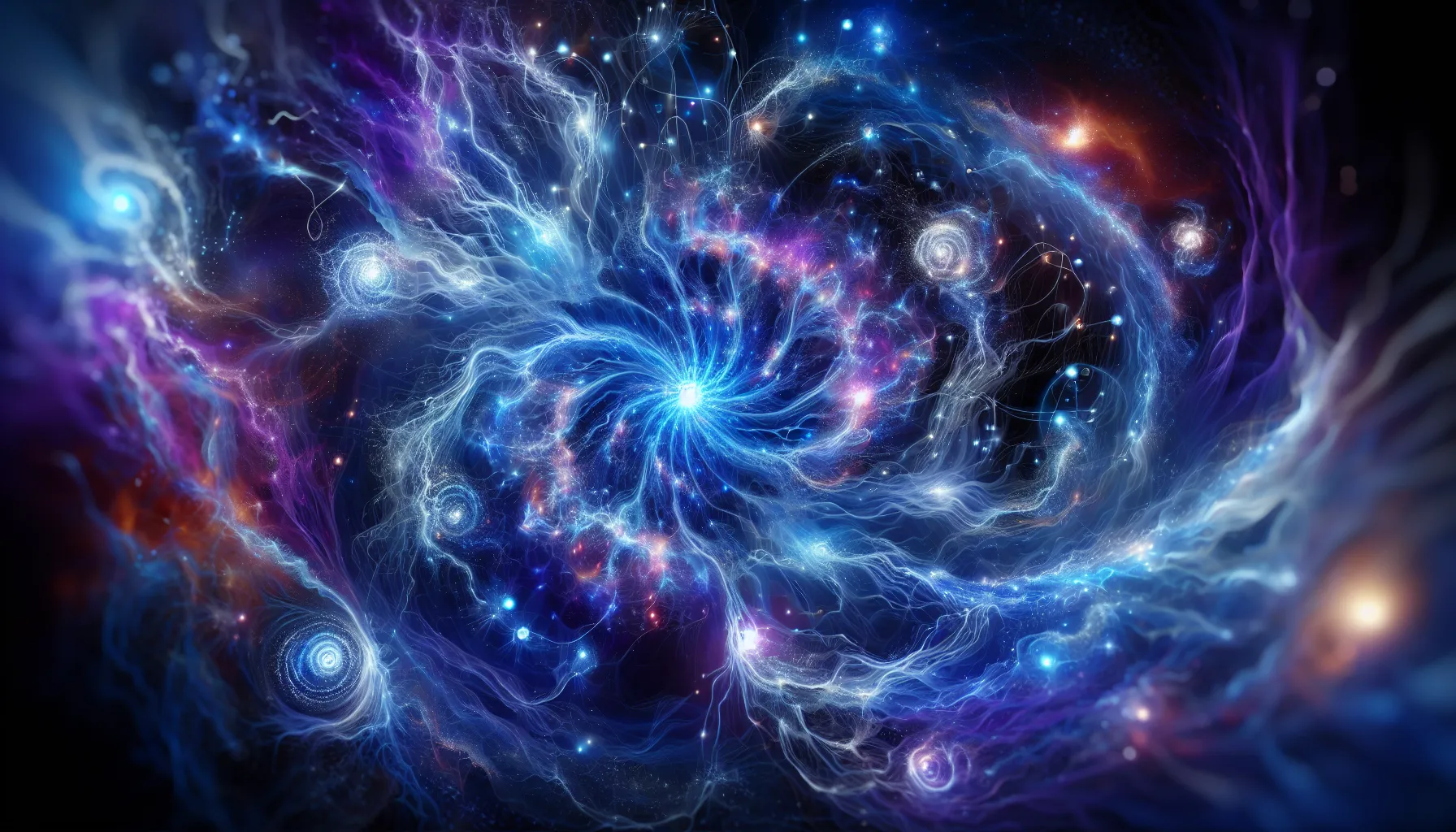I used to think physics was just an endless parade of math problems and forgettable laws. Right up until the day I dropped my sandwich and my phone at the same time: sandwich landed safely, phone shattered. Turns out, understanding why apples fall and light zips along at breakneck speeds can make life feel a bit less random (and your phone a bit safer). Let's look at the universe's inner workings like a nosy neighbor peeking through your window—expect surprise, a little confusion, and some cosmic truths along the way.
Why Do Things Move? (Or, The Secret Life of Falling Apples)
Picture this: you’re standing on a rock—Earth—floating in space, surrounded by more rocks, swirling gas, and a whole lot of nothing. But look closer. The rocks are spinning, the planets are orbiting, and apples? Well, sometimes they fall on unsuspecting heads. What’s really going on here? To answer that, you need to meet the original “Gravity Guy”—Isaac Newton.
Isaac Newton: From Apple Victim to Physics Rockstar
Legend has it, Newton’s big “aha!” moment came when an apple fell on his head. Whether or not the apple actually struck him, it got him thinking: why do things fall? Why do planets move? Newton’s curiosity led him to develop the Newton’s laws of motion, which are the backbone of classical mechanics. These laws explain not just falling apples, but everything from bouncing basketballs to orbiting planets.
Force Equals Mass Times Acceleration: Predicting Basketballs and Broken Windows
Let’s break down Newton’s second law, which you might know as Force equals mass times acceleration (F = m × a). Here’s what it means:
- Force: Any push or pull on an object.
- Mass: How much “stuff” is in the object.
- Acceleration: How quickly the object’s speed changes.
If you throw a basketball, you’re applying a force. The heavier the ball (more mass), or the harder you throw (more acceleration), the more force you need. This law lets you predict if your shot will swish through the net—or crash into your neighbor’s window. It’s not magic; it’s physics.
The Difference Between ‘Mass’ and ‘Weight’: Moon Gyms, Anyone?
Here’s where things get interesting. Mass is the amount of matter in something. Weight is the force gravity exerts on that mass. On Earth, gravity pulls you down with a certain strength. On the Moon, gravity is weaker, so you’d weigh less—even though your mass stays the same. That’s why astronauts can bounce around so easily up there. This is a key point in mass vs weight physics.
Law of Universal Gravitation: Why You DO Pull the Universe (Just Not Enough to Brag About)
Newton didn’t stop at apples. He realized that every mass attracts every other mass in the universe. This is the law of universal gravitation. The force between two objects depends on their masses and the distance between them. The bigger the mass, the bigger the pull. The farther apart they are, the weaker the pull—actually, a lot weaker. As Newton put it:
"Bigger mass, bigger pull. Bigger distance, smaller pull. Actually, a lot smaller pull."
This is called the inverse square law: double the distance, and the force drops to a quarter. That’s why, even though you technically attract every star and planet, you’re not likely to notice it.
So, why do things move? Newton’s laws of motion and his law of universal gravitation explain it all—from falling apples to the cosmic dance of planets. And yes, you’re part of that dance, too.

Energy Works in Mysterious (and Sometimes Explosive) Ways
Ever wonder why your phone shatters when it hits the ground, or why your car brakes get hot after a sudden stop? The answer is energy—something you can’t see, but you definitely feel (especially if you’ve ever stepped on a LEGO at night). The conservation of energy principle is at the heart of these everyday mysteries. In simple terms: energy can’t be created or destroyed, only transformed from one form to another. There’s no free lunch in physics; energy just changes costumes.
Kinetic and Potential Energy Explained: Why Dropping Stuff Matters
Let’s break down the kinetic and potential energy explained idea with a classic example: dropping your phone. When you hold your phone above the ground, it has potential energy—specifically, gravitational potential energy. This is stored up thanks to its position. The higher you hold it, the more potential energy it has. The moment you let go, that stored energy transforms into kinetic energy—the energy of motion—as your phone accelerates toward the ground. When it finally lands (with a cringe-worthy crack), that kinetic energy is transferred into the ground, the phone, and, unfortunately, your screen.
Both kinetic and potential energy are measured in joules. But here’s the twist: energy is just a number, not a direction. It’s a property, not a push or pull. Work, on the other hand, is what happens when you apply a force over a distance—like lifting an apple. If you lift it one meter, you’ve done about one joule of work. But if you try to lift something too heavy and it doesn’t move? Physics says you’ve done zero work, no matter how hard you tried. Feelings don’t count here.
'The key thing to remember about energy: it cannot be created or destroyed, only converted.'
Thermodynamics and Entropy: The Universe’s Messy Side
So, where does all that energy go? Take your car’s brakes. When you stop, kinetic energy doesn’t just vanish—it turns into heat thanks to friction. That heat spreads out into the air, making molecules move faster. In fact, temperature is just the average kinetic energy of atoms in a system. The faster they wiggle, the hotter things get.
Here’s where thermodynamics and entropy come in. The laws of thermodynamics govern how energy moves and changes. Entropy measures how disordered a system is. When you melt an ice cube in the sun, the neat, organized structure of ice becomes the chaotic, free-flowing water. That’s entropy in action: more possible ways for the water molecules to arrange themselves means higher entropy. Research shows that entropy always increases overall—meaning the universe is on a one-way trip toward more disorder.
Practically, this means some energy becomes less useful over time. Burn gasoline, and you get motion, heat, and exhaust. The heat and gas are just gasoline in a messier, higher-entropy form. And no, the gas won’t magically turn back into fuel. That’s the universe’s way of keeping things interesting—and a little bit chaotic.

Charged Up and Spinning Out: From Electrons to the Whole Shebang
Ever wondered what really happens when you flip a light switch? It all starts with a tiny property called electric charge. Every object, from your socks to the sun, can have a positive, negative, or neutral charge. Electrons, those tiny particles zipping around atoms, carry a single negative charge. If you have the same number of positive and negative charges, the object is neutral. But if there’s an imbalance, things get interesting.
So, what is electricity? Simply put, the flow of electrons is called electric current. Imagine a crowded highway: the current is how many cars (electrons) pass a point each second. Voltage is like the slope of the road—the push that gets those electrons moving. And resistance? That’s the traffic jam, slowing everything down. These three—current, voltage, and resistance—are the quirks that make up the basics of electromagnetism and electric charge.
Coulomb’s Law and Electric Fields: When Gravity and Electromagnetism Echo Each Other
Here’s where it gets wild. You might remember Newton’s law of gravity: masses attract each other, and the force gets weaker the farther apart they are. Coulomb’s law and electric fields work almost the same way, but with electric charges instead of mass. Opposite charges attract, while like charges repel. Both forces follow an inverse-square rule, meaning the force drops off quickly as distance increases. Research shows that this similarity hints at deep connections between the fundamental forces of nature.
When you have a charge, it creates an electric field—an invisible force field that pushes or pulls other charges. Add another charge, and you get an electrostatic field, with lines showing which way a charged particle would feel a force. It’s like a map for electrons and protons.
Maxwell’s Equations Overview: Electricity and Magnetism, Together at Last
But the story doesn’t stop at static charges. Enter Maxwell’s equations, the four elegant rules that unite electricity and magnetism. They reveal that a moving electric charge (like electrons in a wire) creates a magnetic field, and a moving magnet can create an electric field. This is why moving a magnet near a wire can make current appear out of nowhere—a phenomenon called induction. Studies indicate that these equations are the backbone of all electromagnetic phenomena, from motors to radio waves.
And here’s the twist: when you accelerate a charge, the changing electric and magnetic fields create a self-sustaining wave that travels through space. That’s an electromagnetic wave. Depending on its frequency, it might be visible light, radio, microwaves, or even the Wi-Fi signals zipping through your home. All of these move at the speed of light: 299,792,458 m/s.
Standard Model Particle Physics: Atoms, Quarks, and the Deepest Layers
Let’s zoom in. Everything you see is made of atoms. Each atom has a core (nucleus) of protons and neutrons, with electrons whizzing around. Dig deeper, and you’ll find that protons and neutrons are made of even smaller particles called quarks. This is where Standard Model particle physics comes in—it’s the ultimate chart of all known fundamental particles (except gravity, which is still a mystery). Photons, those tiny packets of light, are also part of this zoo.
'The flow of electrons is called electric current.'
From the traffic jams of electrons to the cosmic dance of fields and particles, you’re witnessing the universe’s most intricate choreography—one that starts with a simple charge and spins out into the whole shebang.

When Reality Bends: Relativity, Quantum Oddities, and Other Cosmic Curveballs
Physics is full of surprises, and nowhere is that more obvious than when you look at the universe through the lens of Einstein’s theory of relativity and the mind-bending principles of quantum mechanics. If you grew up thinking gravity was just a force pulling apples to the ground, get ready—modern science has rewritten the rules in ways that are as strange as they are fascinating.
Let’s start with Einstein, who basically crashed Newton’s party. Newton’s laws worked well for centuries, describing gravity as a force between masses. But Einstein saw things differently. According to his theory of relativity, gravity isn’t a force at all. Instead, it’s the warping of space-time itself. Imagine the universe as a stretchy fabric—anything with mass bends this fabric, and what we feel as gravity is just objects following the curves. This idea shattered the classical understanding of space and time, showing that both can flex depending on your speed and gravity’s pull. And here’s the kicker: the speed of light—299,792,458 meters per second in a vacuum—never changes, no matter how fast you’re moving. As Einstein put it,
'If the speed of light is constant, time must be relative.'
But Einstein didn’t stop there. With his famous equation, E=mc², he revealed that mass and energy are two sides of the same coin. This mass-energy equivalence explains why nuclear fission and fusion are so powerful. In fission, splitting an atom’s nucleus releases a huge burst of energy, while fusion (the process powering the sun) combines nuclei and also unleashes energy. The secret is the “missing” mass—converted directly to energy. That’s why even a tiny bit of matter can fuel an atomic explosion or light up a star.
Now, if you think that’s odd, quantum mechanics takes things to a whole new level. The double slit experiment, for example, shows that light—and even electrons—can act as both waves and particles. When you shine light through two tiny slits, you get an interference pattern, a classic wave behavior. But send photons one at a time, and you still get the same pattern. It’s as if each photon goes through both slits at once, interfering with itself. This is superposition in quantum physics—particles can be in multiple states until you measure them.
And then there’s the Heisenberg uncertainty principle. It says you can’t know both the exact position and speed of a quantum particle at the same time. The more precisely you measure one, the fuzzier the other becomes. This isn’t just a measurement problem; it’s a fundamental property of nature. Electrons, for instance, don’t have a single location—they exist in a cloud of probabilities, only settling on a spot when you look.
All of this means the universe is far stranger than our everyday experience suggests. Relativity and quantum mechanics principles have shown that reality bends, splits, and blurs in ways that defy common sense. The next time you drop an apple or flip on a light, remember: you’re living in a cosmos where the rules are anything but ordinary.
TL;DR: Physics is the beautiful mess that explains why the world works (and sometimes doesn’t), from apples plonking down to electrons pulling vanishing acts. It’s never as neat—or as boring—as you think.



